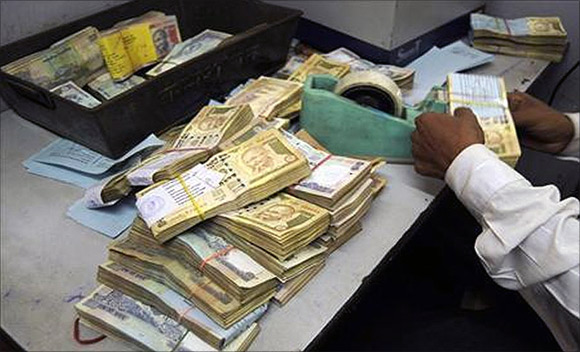
Discrimination between old and new customers have come down after base rate.
Finally, three years since its implementation on July 1, 2010, the base rate mechanism has given new home loan consumers of public sector banks (PSBs) the confidence that they will actually get the benefit of any future rate reduction.
Unfortunately, the same doesn’t apply to housing finance companies. Housing finance companies such as HDFC, LIC Housing Finance, etc, are governed by the National Housing Bank (NHB) and do not have to follow the base rate mechanism.
A quick look at why the base rate mechanism is relatively more transparent than its predecessor, the prime lending rate (PLR), would be in order here.
Banks are not allowed to lend below their base rates to any borrowers. Hence if market rates dip below the base rate, they have no choice but to drop base rates to get consumers.
...

Banks’ base rates currently range from 9.7 per cent and upwards. On top of the base rate, banks charge a spread.
For example, the State Bank of India (SBI) charges a spread of 0.25 per cent above its base rate (currently at 9.7 per cent), which means the rate available to you is 9.95 per cent.
Now, if interest rates in the market go down by, say, 0.10 per cent, then SBI has a choice. It can reduce the base rate to 9.6 per cent, which means you will now get an interest rate of 9.85 per cent (9.6 per cent plus 0.25 per cent).
New consumers will also get the same rate of 9.85 per cent.
...

Else, just reduce the spread for new consumers to 0.15 per cent from the existing 0.25 per cent. Since the base rate does not change in this scenario, you continue paying 9.95 per cent but new consumers will pay only 9.85 per cent (9.7 per cent plus 0.15 per cent spread).
If media reports are to be believed, SBI is indeed wrestling with the issue even as this article is being written.
Changing the base rate is a major decision for the bank, since it affects all existing borrowers but reducing the spread ensures the benefit is passed on only to new consumers.
...

When the base rate mechanism was unveiled in July 2010, most banks had a spread as high as 2.5 per cent above their base rates. Gradually, over three years, base rates have gone up (whenever interest rates rose) but spreads have dropped significantly as banks competed to attract new consumers without dropping prices for old consumers.
PSBs were also under tremendous pressure from the government to reduce rates, which they did on many occasions by reducing spreads.
So much so that for 17 PSBs, including Bank of Baroda, Canara Bank, Central Bank, Dena Bank, IDBI Bank, Oriental Bank and PNB, the spread has reduced to zero and it is a nominal 0.05 per cent for Dena Bank and Vijaya Bank.
The highest spread is 0.25 per cent for Punjab and Sind Bank, State Bank of Bikaner and Jaipur, SBI, State Bank of Mysore, State Bank of Travancore and United Bank of India.
...

Clearly, home loan consumers in the first 17 PSBs named above will automatically benefit from any future reduction in rates.
The others, too, know the maximum discrimination with new consumers can be only up to 0.25 per cent. Things have also improved in the leading PSBs. ICICI Bank (0.40 per cent) and Axis Bank (0.30 per cent to 0.75 per cent) have far lower spreads than earlier though still higher than their PSB counterparts.
Unfortunately, things with HFCs remain the same, despite a specific NHB regulation that prohibits them from discriminating between old and new consumers. There are no signs of this regulation being actually enforced anytime soon.
...

However, if you are a new home loan consumer, things have changed on the ground for the better.
You can be reasonably confident of not being discriminated against in the future by choosing a bank that has a lower spread over its base rate.
There is no reason why a good consumer should accept any spread above 0.25 per cent, although preferably it should be zero per cent. Please remember that spreads are negotiable for good consumers.
Existing consumers will need to take action to enforce their rights. Shift your loan to a bank with zero or low spread to get the benefit of the current low rates, as well as to ensure you are not discriminated against in the future. Both regulators (RBI and NHB) do not allow pre-payment charges.
This rule was brought in to eliminate the biggest barrier to the loan switchover process. Take advantage of this rule now.
The writer is CEO, Apnapaisa.